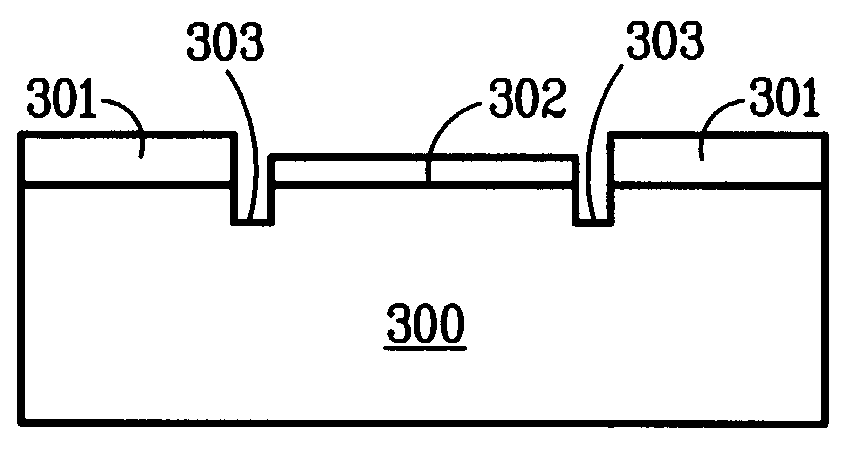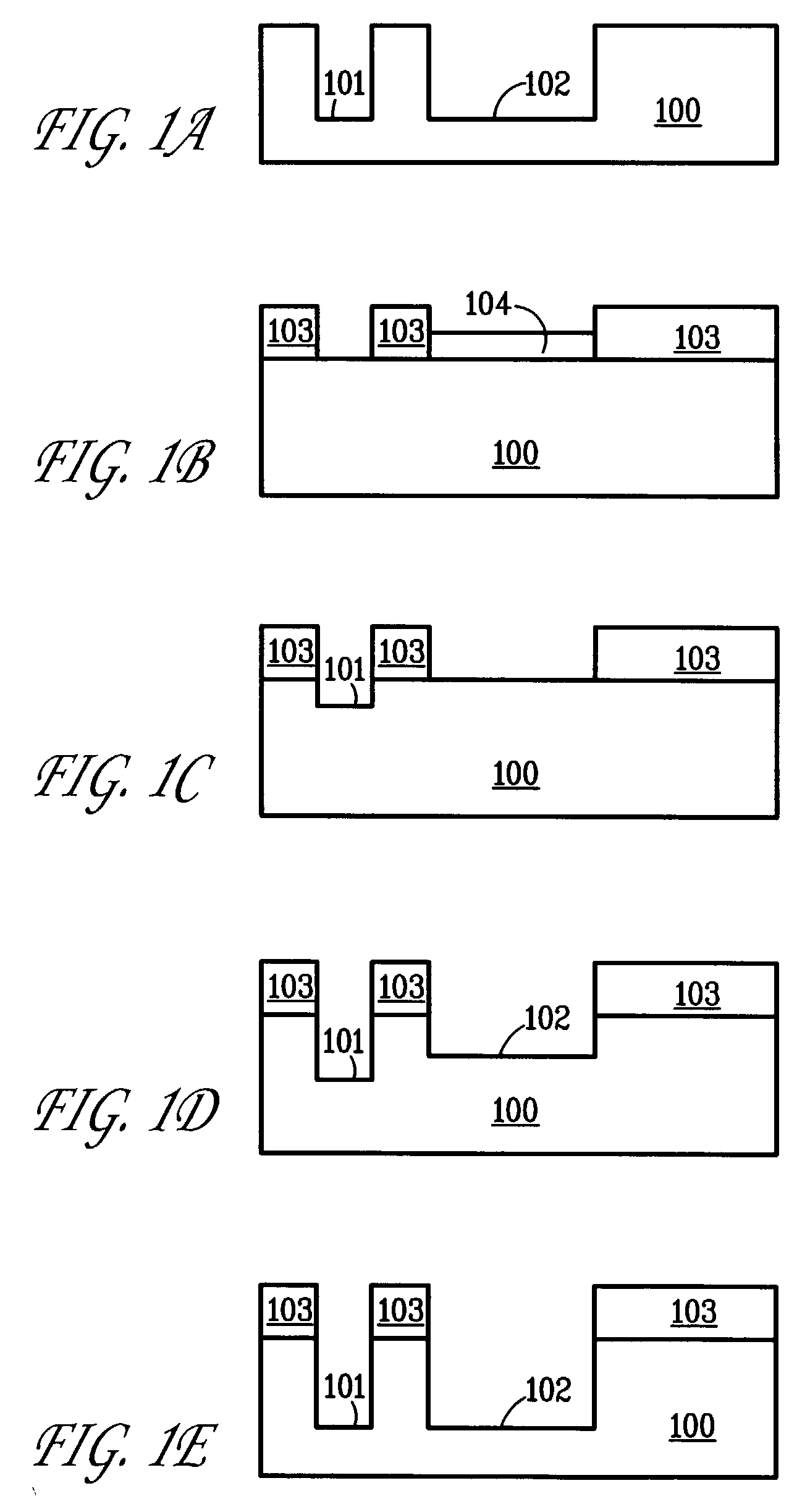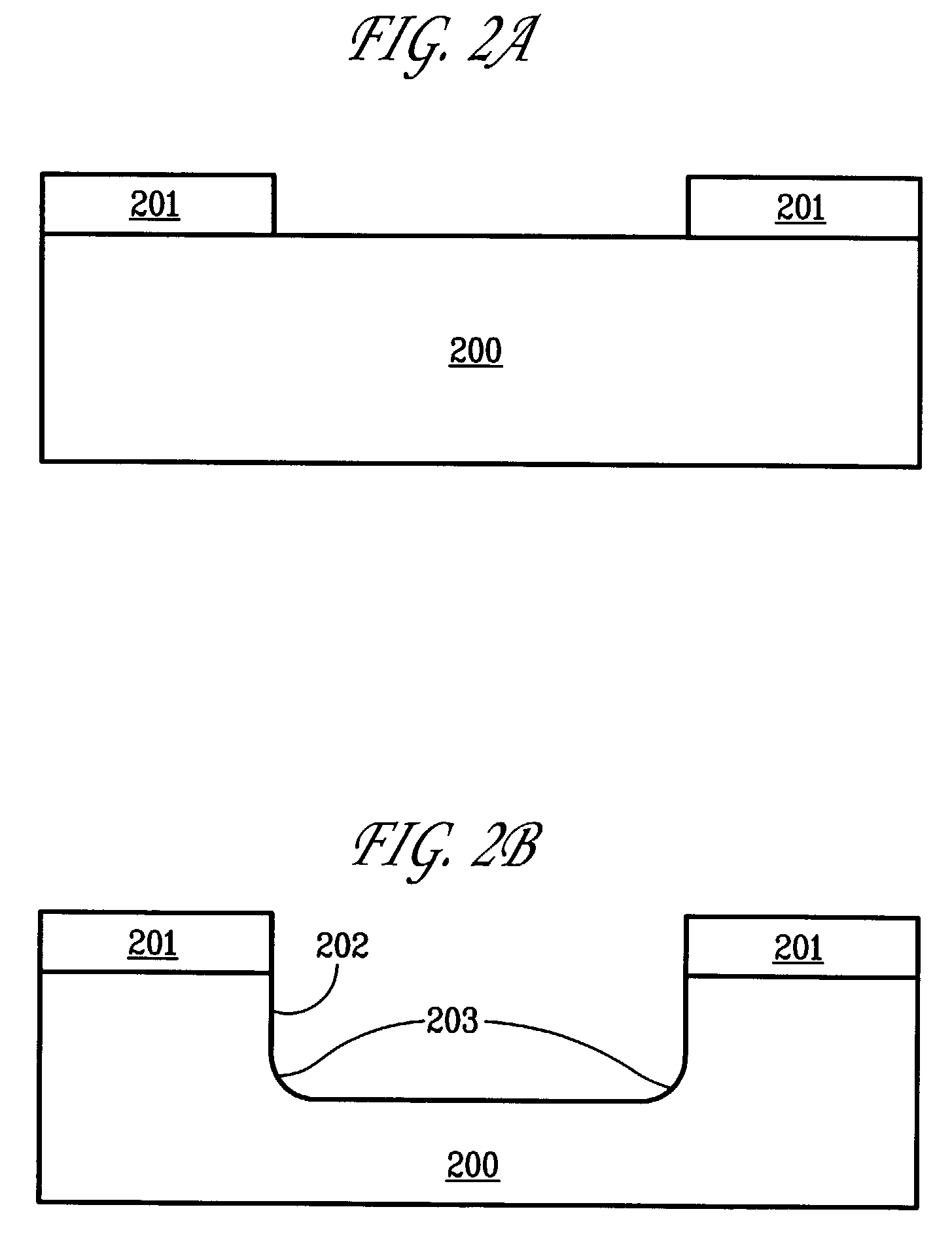Method to control artifacts of microstructural fabrication
a microstructure and artifact technology, applied in the direction of instruments, fluid pressure measurement, vacuum gauges, etc., can solve the problems of affecting the desired motion of the components of the device, and affecting the stability of the devi
- Summary
- Abstract
- Description
- Claims
- Application Information
AI Technical Summary
Problems solved by technology
Method used
Image
Examples
Embodiment Construction
[0015]FIG. 1 illustrates the use of an etching delay layer in the fabrication of microstructures having features with a range of pattern shapes. Specifically, FIG. 1a shows the target microstructure. A narrow groove 101 and a wide groove 102 are to be fabricated in a substrate 100. Grooves 101 and 102 are to have the same nominal depth below the original surface of the substrate.
[0016]FIG. 1b shows the structure immediately prior to the start of the etching process. Mask layer 103 is deposited atop substrate 100. Mask layer 103 can be either a conventional photoresist layer or a thin film hard mask (metal or dielectric) layer, and is patterned so as to define etching windows for narrow groove 101 and wide groove 102.
[0017]Etching delay layer 104 is deposited on substrate 100 within the etching window for wide groove 102. Delay of the etching process in this region is required to obtain the desired structure of FIG. 1a, because wide features etch more rapidly to a given depth than do...
PUM
| Property | Measurement | Unit |
|---|---|---|
| microstructures | aaaaa | aaaaa |
| thickness | aaaaa | aaaaa |
| size | aaaaa | aaaaa |
Abstract
Description
Claims
Application Information
 Login to View More
Login to View More - R&D
- Intellectual Property
- Life Sciences
- Materials
- Tech Scout
- Unparalleled Data Quality
- Higher Quality Content
- 60% Fewer Hallucinations
Browse by: Latest US Patents, China's latest patents, Technical Efficacy Thesaurus, Application Domain, Technology Topic, Popular Technical Reports.
© 2025 PatSnap. All rights reserved.Legal|Privacy policy|Modern Slavery Act Transparency Statement|Sitemap|About US| Contact US: help@patsnap.com



